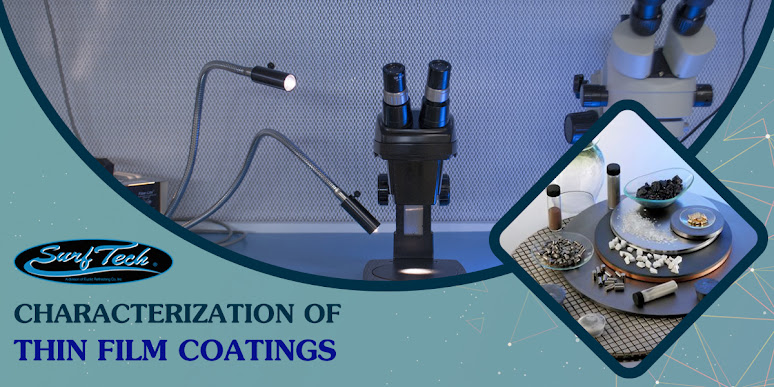How PVD Coating Improves Tool Performance
As technology advances, various industries seek to enhance their manufacturing processes to meet the ever-growing demands of their consumers. One such advancement in the manufacturing industry is the use of Physical Vapor Deposition (PVD) coating to improve tool performance. In the field of tool manufacturing, the demand for high-performance tools is always on the rise. Whether it is for machining, cutting, or drilling, the tools used need to be highly efficient and long-lasting. One technology that has emerged as a game-changer in the industry is Physical Vapor Deposition (PVD) coating. In this article, we will discuss how PVD coating improves tool performance and why it is important for tool manufacturers like Surftech INC to incorporate it into their tool-making process.
Introduction to PVD Coating
PVD coating is a process that involves depositing a thin film of a material onto a substrate, which is the tool in this case. The process takes place in a vacuum chamber, where a high-energy beam is used to evaporate the coating material, which then condenses onto the tool surface.
How PVD Coating Improves Tool Performance
- Increased Hardness and Wear Resistance
One of the most significant benefits of PVD coating is its ability to increase the hardness and wear resistance of the tool surface. The coating material, such as titanium nitride (TiN) or chromium nitride (CrN), forms a hard and durable layer on the tool surface, which significantly improves its resistance to wear and tear. This means that tools with PVD coatings last longer, reducing the need for frequent replacements and saving costs in the long run.
Also read about, Enhance Your Product's Durability and Performance with High-Quality PVD Coating Services
- Enhanced Surface Finish
PVD coatings also provide a smoother and more uniform surface finish on the tool, which can significantly improve its performance. The coating acts as a barrier between the tool and the material being worked on, reducing friction and heat generation. This results in a better surface finish, increased accuracy, and improved dimensional stability of the tool.
- Reduced Friction coefficient and Heat Generation
Reducing friction coefficient and heat generation is crucial in various applications to improve performance and extend the lifespan of equipment. High levels of friction and heat can cause excessive wear and tear on moving parts, leading to increased maintenance costs and potential equipment failure. One solution to this problem is the use of lubricants that can reduce friction and dissipate heat. Additionally, advanced technologies such as PVD coating can improve the surface hardness and wear resistance of materials, reducing friction and heat generation during use. By reducing friction and heat, equipment can operate more efficiently and have a longer lifespan, resulting in cost savings and improved performance.
- Enhanced Adhesion
Enhanced adhesion is a critical factor in many applications where bonding strength is essential. Adhesion is the ability of a material to stick to another surface or substrate. However, achieving strong adhesion can be challenging, particularly when working with dissimilar materials. One solution to this challenge is the use of PVD coating, which can significantly enhance adhesion between materials. PVD coating creates a thin film on the substrate's surface, providing a more robust and uniform bonding layer. The process involves depositing a vaporized material onto the surface of the substrate, creating a thin film with high surface energy. This process improves the surface's adhesion properties, allowing for a stronger bond between the coating and the substrate. Enhanced adhesion can lead to improved performance, longer lifespan, and reduced maintenance costs.
Also read about, Tell Me the Best Way to Achieve Better PVD Coating
- Longer Tool Life
In the manufacturing industry, tool wear and failure can lead to increased downtime, production costs, and reduced efficiency. One way to address this issue is by extending the tool's lifespan, reducing the need for frequent replacement and maintenance. PVD coating is a technology that can significantly increase the tool's lifespan by improving its surface hardness and wear resistance. PVD coating creates a thin film on the surface of the tool, improving its wear resistance and providing a protective layer against abrasive and corrosive environments. This layer significantly reduces the wear and tear on the tool, resulting in longer tool life and reduced maintenance costs. PVD coated tools can also operate at higher speeds and feed rates, further improving their efficiency and performance. By extending the tool's lifespan, PVD coating technology can result in significant cost savings for manufacturers while improving their overall production efficiency.
Conclusion
In conclusion, PVD coating is a powerful technology that can significantly improve the performance and lifespan of tools and equipment in various industries. The process involves depositing a thin film on the surface of the substrate, improving its surface hardness, wear resistance, adhesion, and reducing friction and heat generation. These improvements can result in longer tool life, reduced maintenance costs, improved efficiency, and increased production output. The benefits of PVD coating technology make it an attractive solution for manufacturers looking to improve their production processes and meet the demands of their consumers. As technology continues to advance, we can expect further innovations in PVD coating and other manufacturing processes to continue improving efficiency and performance in the manufacturing industry.




Comments
Post a Comment